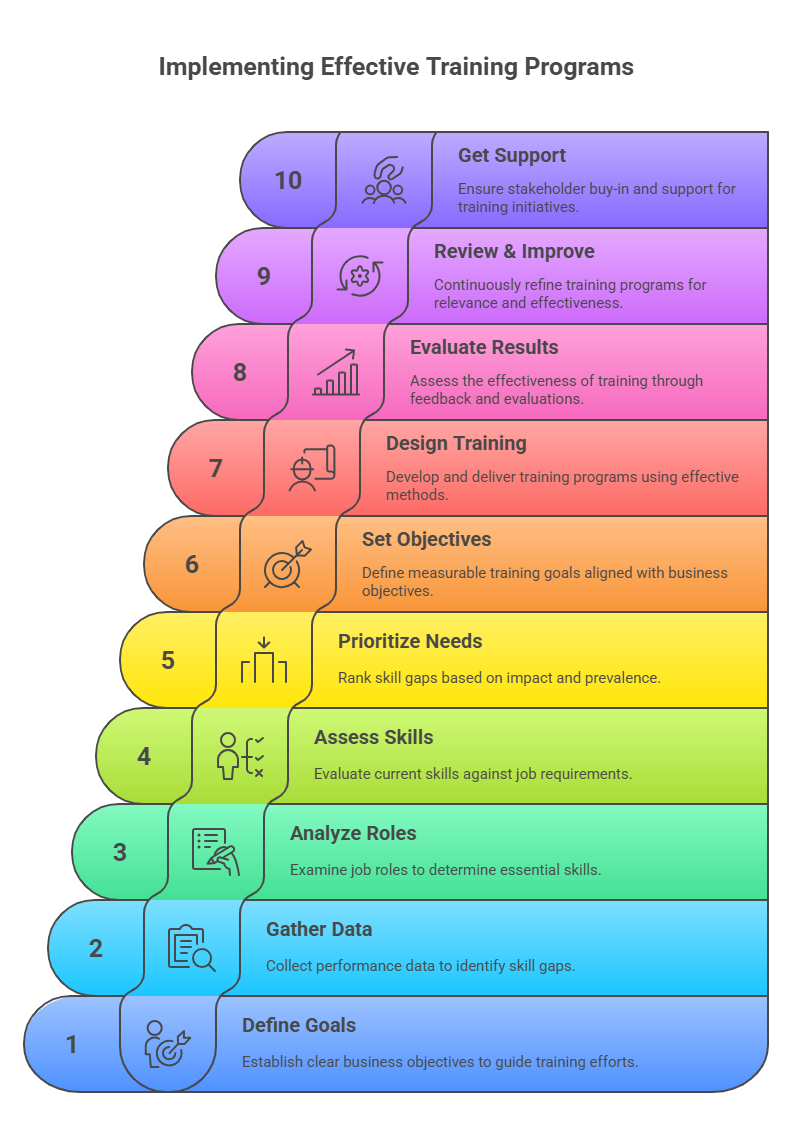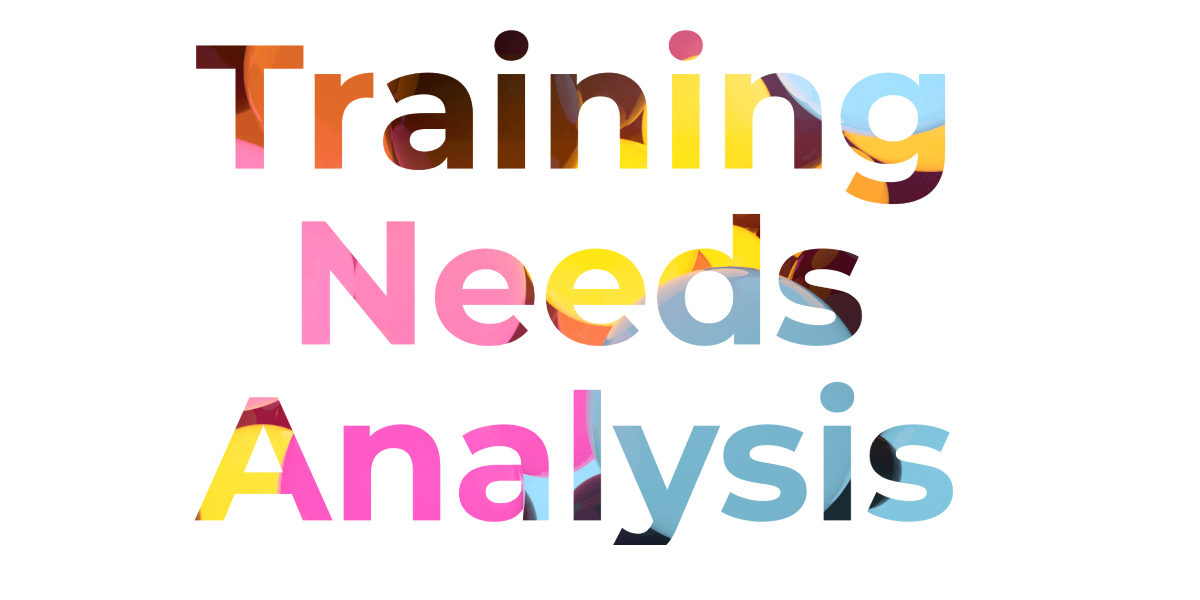How to do training needs analysis
Table of Contents:
Introduction
Step 1: Define Business Goals
Step 2: Gather Performance Data
Step 3: Analyze Job Roles
Step 4: Assess Skills and Spot Gaps
Step 5: Prioritize What’s Needed
Step 6: Set Training Objectives
Step 7: Design and Deliver Training
Step 8: Evaluate Training Results
Step 9: Review and Improve
Step 10: Get Support from Everyone
Conclusion
FAQ
How to do training needs analysis
Do your employees have the skills they need to succeed? A training needs analysis (TNA) is the first step toward building a skilled workforce. It helps you spot the knowledge and skill gaps within your organization, then figure out the right training to close them. This guide will walk you through the process, using reliable information to guide you.
Introduction
The Training Needs Analysis is a planned process for discovering employee skill gaps. It helps align training with the company’s broader plan.
Step 1: Define Business Goals
What do you want your business to achieve? Identifying the organization’s business goals is the first thing you should do in a TNA. You need to know what the organization wants to achieve in the short term as well as the long term. For example, suppose a business wants to make customers happier. Its training programs might focus on things like communication, understanding the customer, and knowledge about the product .
Training needs should match up with the overall business goals. In that way, the training is relevant and it will get approval from leaders, also from other stakeholders.
Step 2: Gather Performance Data
To discover skill gaps, you must collect data about current performance. These are some ways to get this done:
- Employee Surveys– They give you insights into what employees think about their skills, together with the challenges they face.
- One-on-One Interviews with Managers– Managers provide information on the performance of their team members.
- Performance Reviews, also KPIs– They assist in measuring how well individuals and teams are performing toward the established goals.
- Observations or Productivity Metrics– They give data about how well people do their jobs, and how effectively.
- Feedback from Clients or Customers– That input reveals what areas need work .
By pulling together data from several places, you get a rounded picture of your organization’s good points, not only its weaknesses.
Step 3: Analyze Job Roles
This step means taking a close look at what each job involves. You go over the job descriptions, also you speak with managers. In this manner, you can identify the most important skills and abilities for each job. Consider a sales job, for example. It might call for skills in building relationships with customers, knowing products, as well as negotiating .
Step 4: Assess Skills and Spot Gaps
Once you’ve gathered information, assess employees’ current skills, or compare them to what each job requires. This will help you see where skills are lacking. Remember, training isn’t the answer to every gap. Sometimes, it makes more sense to hire someone with the specialized skills needed .
Step 5: Prioritize What’s Needed
When you know the gaps, put them in order depending on how they affect your business goals, also how common they are among workers. Doing so makes sure you spend resources on the areas where training will do the most good .
Step 6: Set Training Objectives
With the gaps and the priorities in mind, set clear goals for the training. Such goals should be measurable as well as aligned with your business’s big-picture aims. Say a business wants customers to be happier. In that case, a training goal could be to give better customer service skills to the people who deal with customers every day .
Step 7: Design and Deliver Training
You design training programs based on the training goals, furthermore, you deliver these courses, workshops, or whatever with the most successful techniques at hand. Options include coaching while working, mentoring, certifications, online learning, or workshops. What you choose will hinge on the nature of the skill gap, in addition to how your employees learn best .
Step 8: Evaluate Training Results
After giving the training, check to see how well it worked. One must track how well the learners are improving – this is done through follow-up evaluations and feedback. In that way, you can improve future training. Performance measurements will help make sure the training does what it’s supposed to do, and it will help you plan training later on .
Step 9: Review and Improve
You should review your training programs regularly. See how well they are impacting your business, and refine the training as appropriate. Through this continued improvement, the training stays relevant and effective over time .
Step 10: Get Support from Everyone
During the training process, keep your stakeholders in the loop and get their backing. This means leaders, managers, as well as employees. To put training programs in place successfully and keep them going, you need their support .

Conclusion
A training needs analysis is a systematic way to make training line up with business goals. By doing it, you will ensure that your training programs are effective, save resources, in addition to help the business achieve its objectives. Whether you want to improve customer happiness, raise the level of employee skills, or make people more productive, a well-done TNA gives you the base for a successful training program.
To summarize, a training needs analysis is not just discovering gaps. It is about making a plan for training that propels the business onward. By including this kind of thing in your business strategy, you know that your training is well-aimed, impactful, in addition to lined up with your broader business vision.
FAQ
What is a Training Needs Analysis (TNA)?
A Training Needs Analysis is a process of identifying the gap between current employee skills and the skills required to meet organizational goals.
Why is a TNA important?
It ensures training efforts are targeted, relevant, next to effective, maximizing the return on investment in training and development.
Who should be involved in a TNA?
Stakeholders at all levels should be involved, including leadership, managers, along with employees, to gain a comprehensive understanding of training needs.
How often should a TNA be conducted?
A TNA should be conducted regularly, especially when there are changes in business goals, technology, or job roles.
Resources & References:
- https://www.bizlibrary.com/blog/training-programs/6-simple-steps-to-conducting-a-training-needs-analysis/
- https://www.arlo.co/blog/training-needs-analysis
- https://www.predictiveindex.com/blog/training-needs-analysis/
- https://www.airswift.com/blog/training-needs-analysis
- https://www.trainingfolks.com/blog/how-training-needs-analysis-shapes-training-programs





